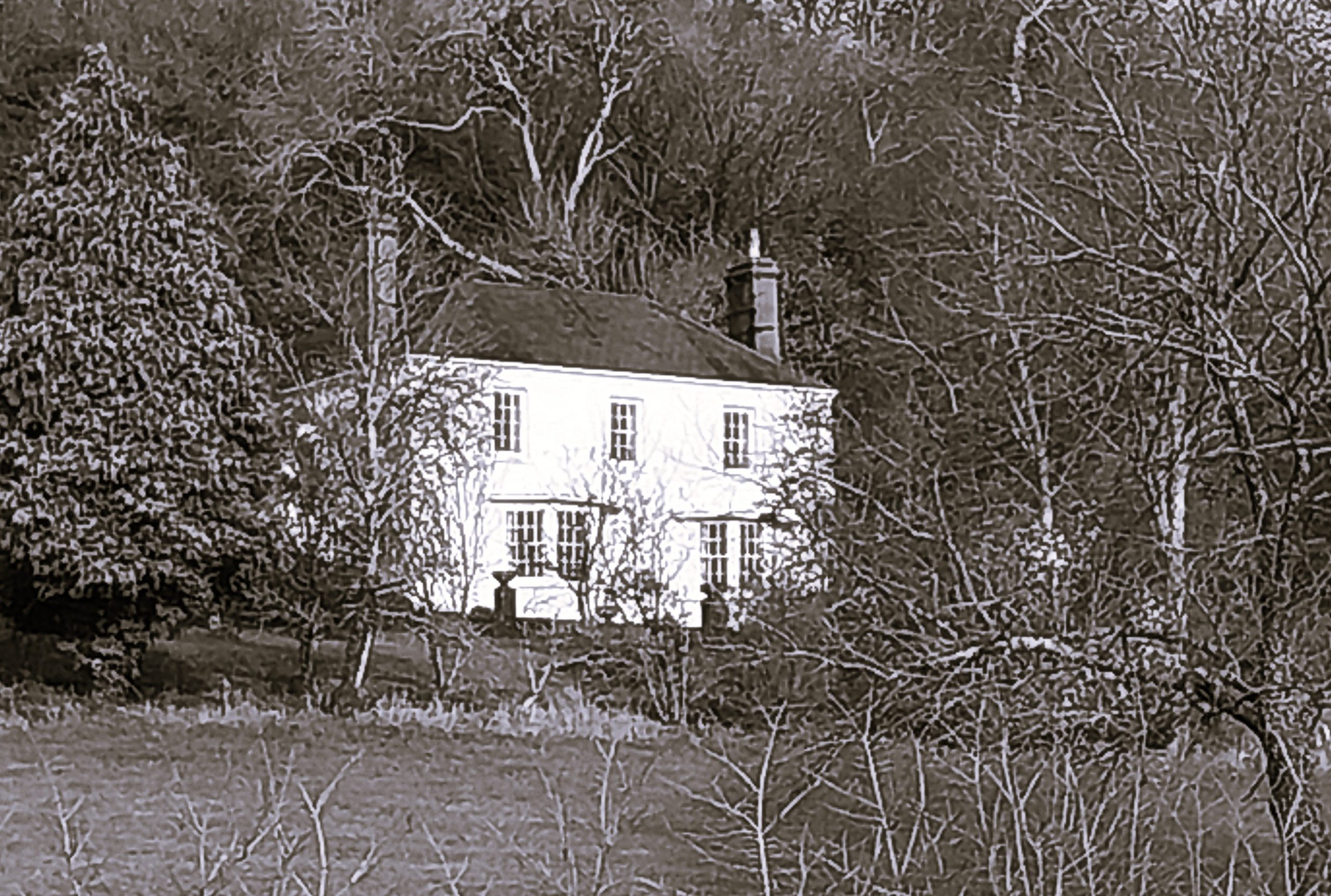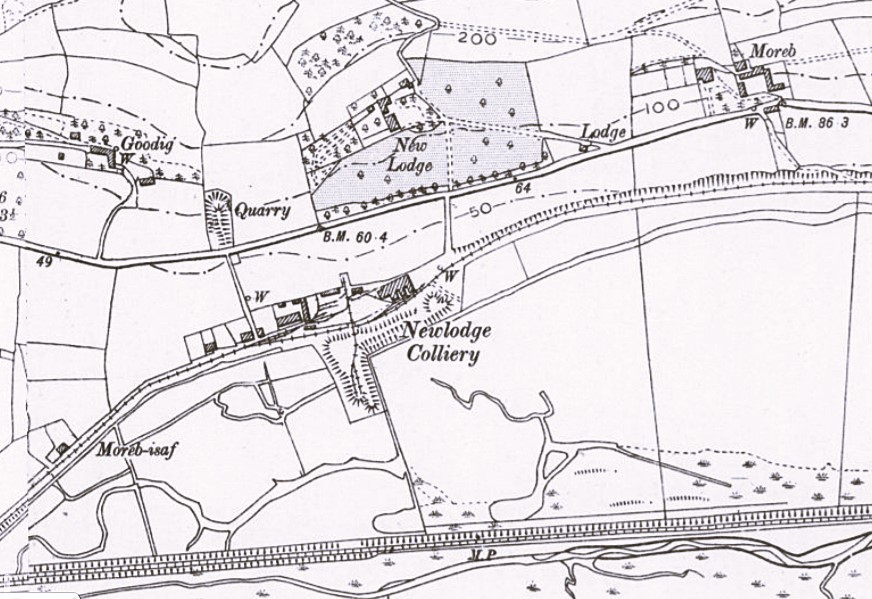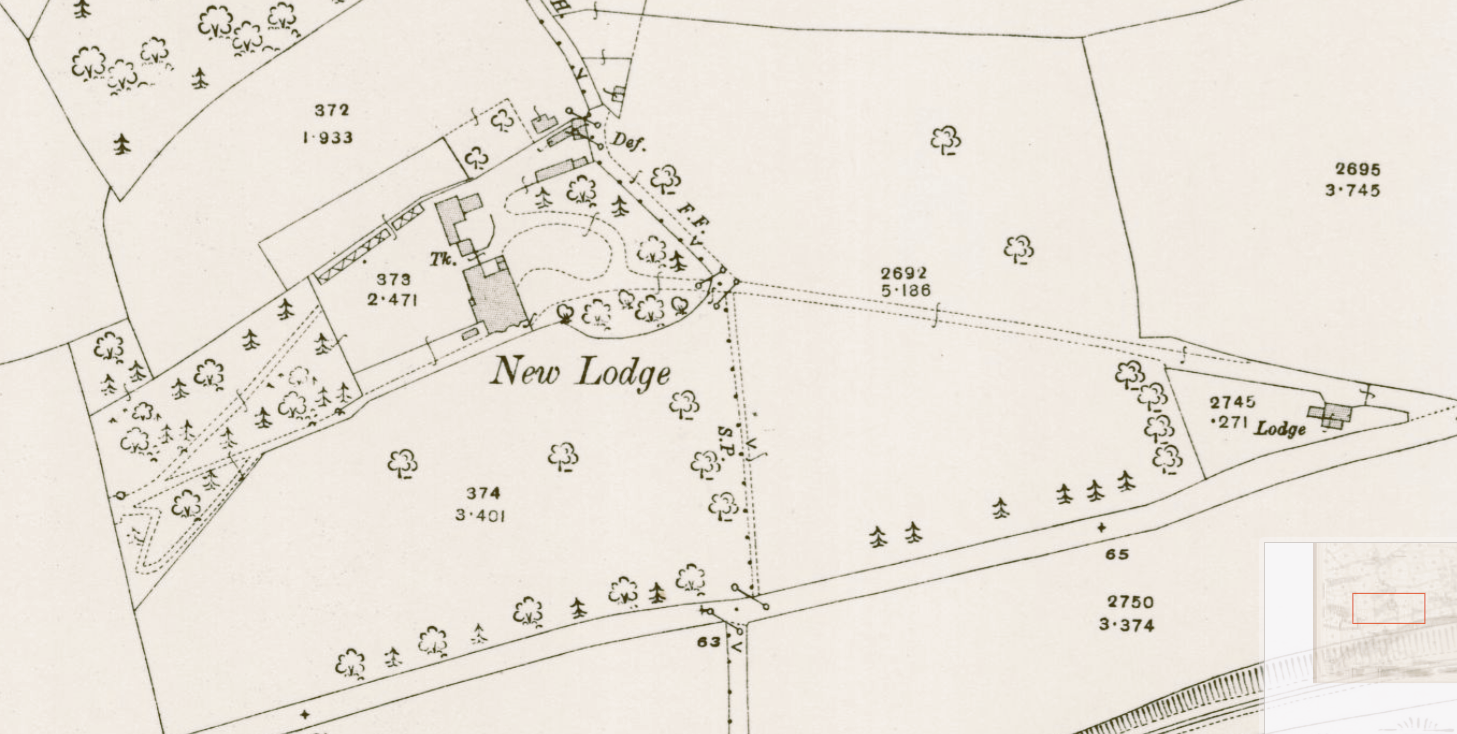NEW LODGE AND THE EARLY INDUSTRIALISTS
New Lodge was built around 1728 and still stands majestically on the A484 on the way out of Burry Port in the direction of Llanelli and commanding a spectacular view over the Loughor Estuary. An OS map of the 1880s (included) shows the extent of the property with New Lodge Colliery to the south. An OS map of 1913 (included) shows some more detail including drive way, woodland, possibly greenhouses and other out-buildings.

Thomas Gaunt
New Lodge was once the first home in Pembrey/Burry Port for Thomas Marmaduke Gaunt who was to become a major industrialist in the area. Gaunt had an ambitious vision of an expansive empire of smelting fuelled by his ownership of collieries, and exporting both bituminous coal and anthracite from his own harbour on his own ships.
In fact, the arrival of Thomas Gaunt, a solicitor of the firm ‘Gaunt and Loftus’ with his office in Lambs Conduit Street London, was to transform the coal and iron industry in Pembrey. Historian Raymond E. Bowen claimed: “George Bowser may have fired the gun to start the Pembrey industrial marathon, but it was Gaunt and Company who had taken up the running and won an amazing race set at an amazing pace”.1
It was no mean achievement for a young solicitor with no obvious industrial experience to set up an ironworks, open collieries, build a harbour, construct tramroads, dig a canal and provide employment for hundreds of people which changed the agricultural community into which he also brought his family.
He was born in 1796 in St Mary Islington East, Middlesex and married Elizabeth Louisa Fletcher in April 1813 in Lichfield, St. Michael, Staffordshire. Before their arrival at New Lodge their first child, Elizabeth Lucy, was born in the parish of St. George the Martyr in Middlesex in March 1814, and while at New Lodge Thomas, Charles, Jane and Fanny Gaunt were born. Sadly, an infant daughter died at New Lodge in 1823.
In the documents about the family Gaunt is described as Attorney at Law and Gentleman. In two London directories, one a directory of solicitors, 2 the firm of Gaunt and Loftus are listed in 1814. If he had indeed moved to Pembrey in 1814 he was still working at times from his office in Lambs Conduit Street as letters to George Bowser indicate in the Bowser Family Papers 3 and legal cases in 1814 and 1815 cited in the London Gazette, Globe and Stamford Mercury which mention Gaunt as solicitor.

Colonel Francis Pemberton
Following Thomas Gaunt at New Lodge came Colonel Francis Charles James Pemberton who is listed in the Pigot & Co. South Wales directory for 1830 under the heading of ‘Nobility, Gentry and Clergy’ and living at New Lodge. In the 1844 directory he is also listed under the heading of Coal Proprietors and Merchants as dealing in bituminous and anthracite with William Williams, his agent.
Colonel Pemberton had worked New Lodge Colliery from the early 1830s driving into the Gwscwm seam, but there were also older workings at Cwm Firman with the coal shipped from Barnaby Pill. It was often called ‘Level y Colonel’ and there was a quay wall near the colliery.4 The level was acquired and opened in 1857 by copper works owners Mason and Elkington as part of their plan to have their own mines providing coal for their Copper Works. In 1839 we read in the Cambrian newspaper of how Colonel Pemberton was instrumental in the formation of the South Wales Anthracite Association with the aim of promoting the properties of anthracite as a very valuable fuel. 5
The 1841 Census describes the residents of New Lodge as only three members: Francis Pemberton, aged 60 and two family servants, Mary Lewis, aged 12 and Margaret Johns, aged 12. However, at this time he was married to Frances Theore of Cambridge (in 1816) and they had one child also called Frances, in 1818. It was she who inherited the estate.
There is an online local history group account of the history of the the Pemberton family who have lived in Trumpington Hall for over 300 years. When Rev. Jeremy Pemberton died in 1800, the estate passed to his 21year old grandson, Francis Pemberton. He had been born in India in about 1778 (documents disagree) and sent back to England in 1781. He was at Eton from 1788 to 1796, then at Emmanuel College. At the time the estates in Cambridge and Wales were managed by Francis Pemberton’s second cousin, Christopher Pemberton, a Cambridge lawyer.
Francis Pemberton was a Colonel of the Cambridge Militia. When he died in Barberieux, France, on 18th Oct 1849 his body was returned to Trumpington the next year with his coffin lined with leather to survive the sea journey back to England.

- The Burry Port and Gwendreath Valley Railway and its Antecedent Canals, Volume 1, Oakwood Press, Usk, 2001.
- Johnstone’s London Commercial Guide and London Directory of Solicitors
- Carmarthenshire Archives
- Roderick Thomas, ‘Burry Port: History of its Industries, Communications and Coalmines’, Unpublished document.
- Cambrian, 24 August 1839.
Further reading: Homes of Historic Interest in and around Llanelli, William and Benita Afan Rees, Meiros Publications.
GRAHAM DAVIES November 2025[/vc_column_text][/vc_column][/vc_row]
